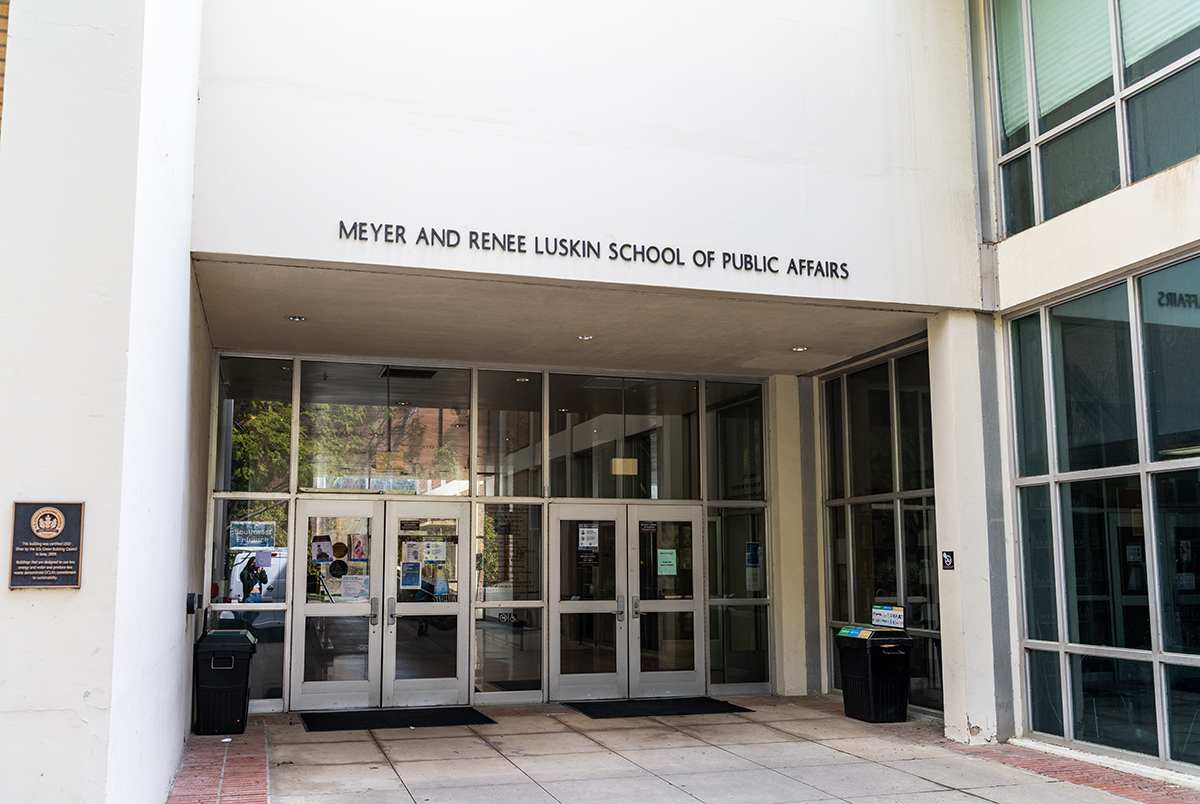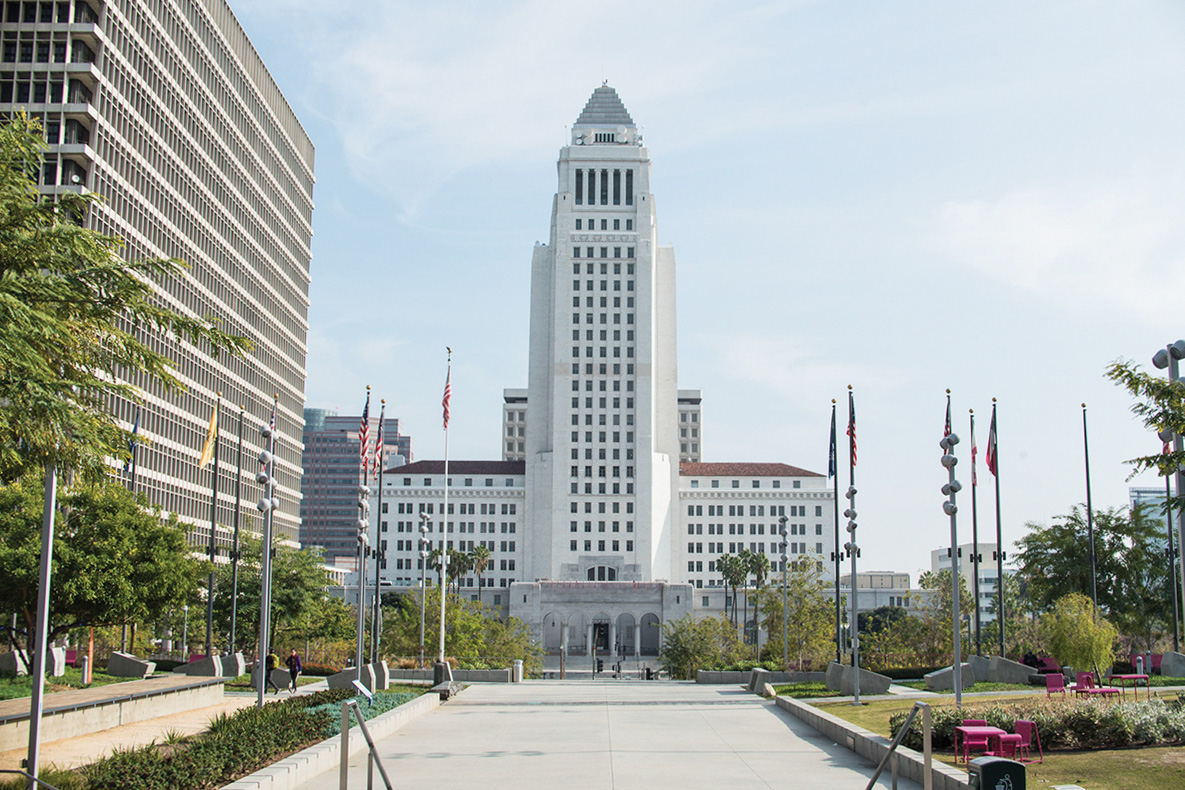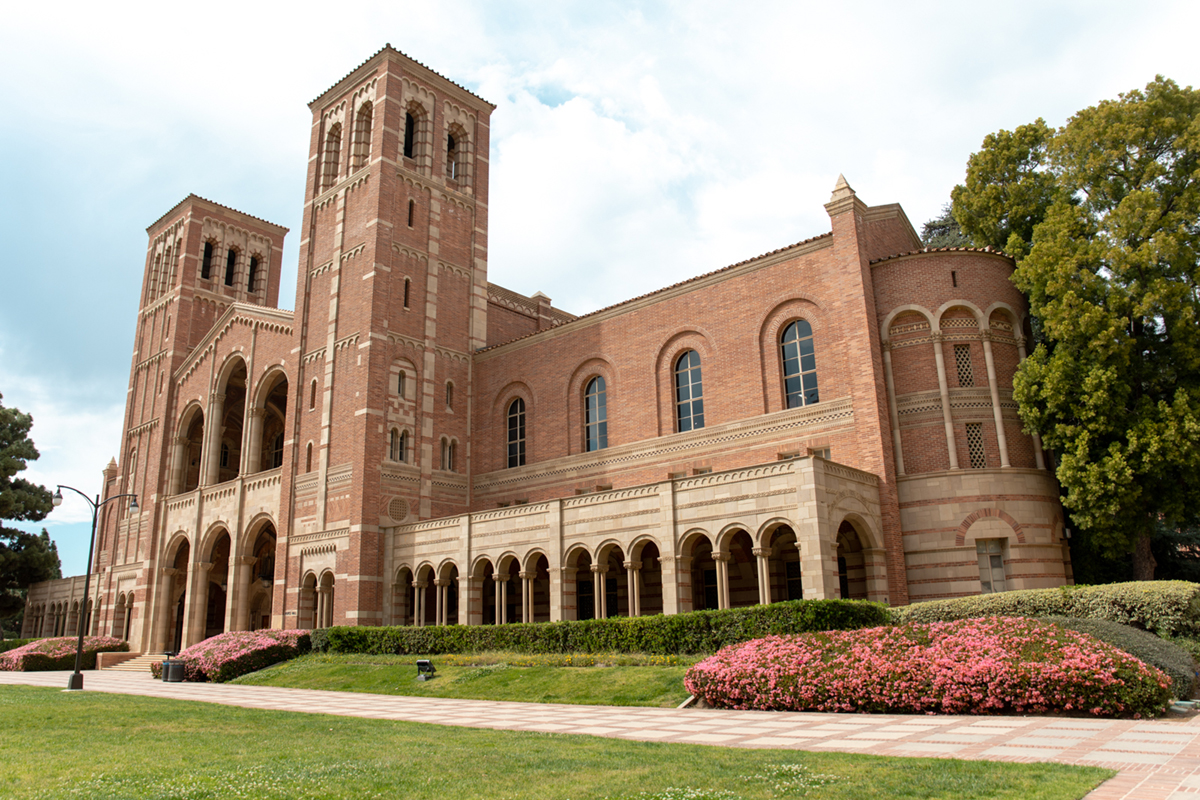Recent rain reveals success of ‘green alleys’ program, according to UCLA faculty

Pictured is the Luskin School of Public Affairs, where the Luskin Center for Innovation is housed. In 2015, the Luskin Center for Innovation’s researchers evaluated the Avalon Project’s pilot program in South Los Angeles. (Megan Cai/Assistant Photo editor)
Faculty discussed a new flood control and stormwater recapture program that has had a successful pilot run during its usage in recent storms in the Los Angeles area.
The Avalon Green Alleys Demonstration Project was started in 2009 by The Trust for Public Land – a national nonprofit organization dedicated to creating and protecting public lands – with the intention to improve wastewater control in LA by transforming trash-strewn, polluted and impermeable alleyways into “green alleys,” according to the TPL website.
Green alleys are smoothly paved corridors that are typically lined with greenery and permeable materials to absorb groundwater and reduce water waste, according to Curbed. The Avalon Project completed its first green alley in 2015 in the small neighborhood of South Park in Southern LA.
The strategies and framework of this sustainable urban planning project are pertinent now more than ever with the historically large amounts of rainfall and flooding that the LA area has seen in recent months, said Jon Christensen, an adjunct professor of environment and sustainability and a researcher at the Luskin Center for Innovation. According to the Los Angeles Almanac, the 2022-2023 wet season is LA’s wettest in 18 years, with more than 24 inches of cumulative rainfall.
In March 2015, the UCLA Luskin Center of Innovation carried out an evaluation of the project and its effects in a small community in South Park. Colleen Callahan, co-executive director of the Luskin Center for Innovation, said she has been awed by the transformations that have occurred since the project’s implementation.
“We’re really impressed by the multi-benefit nature of what the Avalon Project was doing to transform alleys that were really kind of seen as a community kind of problem – a source of trash and flooding during heavy rains, crime, etc, into a place that had many types of benefits for the community of South LA,” Callahan said.
According to Curbed, the project was highly successful in improving stormwater recapture and groundwater recharge. Researchers expect the system to contribute to the recapture and infiltration of 76,000 gallons of water for each rainstorm in the LA area, according to the Luskin Center for Innovation’s report.
The use of permeable materials in the project particularly helps to redirect wastewater, said Walker Wells, a lecturer in urban planning, in an emailed statement. Wells said replacing impermeable ground surfaces such as asphalt and concrete with porous materials can not only increase water infiltration into aquifers but also alleviates urban heating issues.
[Related link: Campus Queries: Recent LA heat wave highlights climate change, thermal inequality]
According to a 2018 study published in Science of the Total Environment, pavements with permeable materials increase evapotranspiration for groundwater infiltration, and the permeable pavement can be up to 9.4 C cooler at maximum temperatures compared to its concrete counterpart.
Susanna Hecht, professor of urban planning, said the type of vegetation used in green alleyways is also important to consider. Urban planning professionals should consider incorporating plants that have lower water demand to preserve groundwater, she said.
Hecht added that the Avalon Project’s incorporation of vegetation into an urban environment can also make the environment feel more habitable for its residents. Cities with arboreal vegetation have higher aesthetic value and appeal to attract people to spend more time outside in streets, she said.
Hecht also said the choice of vegetation and whether or not one should preserve a lawn in Westwood and other wealthy areas alike could make a huge difference in water use management.
“But for a lot of these other things, you could easily turn them into sort of more native plants, more water-wise plantings, and so on,” Hecht said. “That would support the wild, that wouldn’t use so much water, that would also drain the water off the landscape a lot better.”
The success of the Avalon Project in groundwater recharge, reducing flood-related issues and increasing urban biodiversity has spurred conversations around the potential for city officials to implement similar green alleys in UCLA and Westwood, the report stated.
Wells, in the emailed statement, said green alleys could potentially address the flow of storm runoff on campus, although this could prove challenging with its downhill topography. This would require water interception and redirection infrastructures, he said.
Hecht added that the UCLA campus could do more to incorporate less water-demanding and non-native plant species as well. Flora such as fruit trees could support an array of animal life and prevent the loss of our groundwater supply, but this would require extensive ecological knowledge over how to properly integrate this new vegetation, she said.
Although outreach for green alleys in South LA began in 2008, experts questioned delays in completing the first alley, which finalized construction in 2015.
According to the Trust for Public Land, the Avalon Project placed a strong emphasis on community engagement in its pilot stage, speaking with local schools, senior centers, churches and community groups at each level of the project implementation. Strategies for increasing community participation included alley cleanups, tree planting, art projects and collaborative events, according to the Luskin Center for Innovation’s report.
The project’s prioritization and commitment to the community resulted in longer construction timelines for the Avalon Project, requiring patience and understanding, Christensen said.
“It’s (the Avalon Project) been underway for several years now, and people get really concerned that it’s not moving fast enough, but these kinds of projects take time,” Christensen said. “They take time to plan, they take time to really engage responsibly and authentically with the community to find out what they’re concerned about.”
According to a Luskin Center report released in August, robust community engagement is essential throughout all stages of sustainable urban planning projects – from identifying community priorities to developing proposal projects, throughout implementation and on to operations and maintenance. Community participation and input were and continue to be indispensable for the Avalon Project, both informing the process and ensuring its longevity by encouraging residents’ involvement in its construction and maintenance.
Christensen added that the Avalon project is a first step to incorporating biophilic conditions into urban cities, and the hope is that LA continues in a green and climate-resilient direction.
“We have to be patient, but we also have to keep at it and keep building these kinds of good projects that do that work of capturing and cleaning groundwater and improving neighborhoods.” he said.





